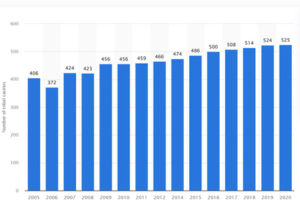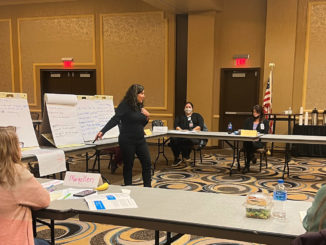RFM

Using recency, frequency and monetary (RFM) value to segment a casino database has served most direct marketers well over the last 20+ years. Yours truly included. As a matter of fact, I was hoping to retire while it was still cool so that I didn’t become a casino fossil. Well, since joining Mille Lacs Corporate Ventures nearly two years ago to work alongside a team of talented data scientists, I have learned that the time has come to progress – which is something the industry seems to understandably struggle with. Casinos historically generate strong profits with healthy margins, so why tinker with it?
Twenty-five years ago, a little RFM and keeping the doors unlocked were pretty successful casino marketing strategies. Demand exceeded supply. We’ve grown well beyond that now with the number of Native American casinos increasing over 30 percent in just the past 15 years. Competitive pressure demands a different view.
Aim Small, Miss Small
A majority of casinos still utilize the RFM principle, and in the absence of something better, this classic method still performs fairly well, especially in the area of correlation between player recency and likelihood to return. As granular as this strategy has been stretched, it was never a great predictor of player potential. Many of the segments were still too large. We aimed too big and missed many opportunities to connect with potential VIPs who were just tire-kickers on their initial visit.
Technology has advanced so that you can be much more predictive and truly identify several pockets of guest behavior using more scientific methods. Tools today can apply complex business rules at the individual player level based on rated casino data and things like player browsing behavior when using your website or app. Studies have shown that utilization of clustering can provide a lift in prediction accuracy in the 10 to 12 percent range, just on attrition alone! Using these models to better understand your guest potential – including predictions of attrition – will protect revenue year-round. Add some AI to these predictions, and you can keep guests coming and revenue climbing without a lot of heavy lifting.
So How Does This Work?
Clustering differs from RFM segmentation by incorporating a more expansive view of variables when grouping like-players. Examples can include lodging status, household income, offer value sensitivity, denom, velocity of play, chronic promotion responder or non-responder status … you get the idea. The list is really only limited by information flowing into your data lake.
Take acquisition as an example. There are casinos not mailing to guests with less than three visits because of the legacy thinking that a guest requires a minimum of three visits to establish behavior and loyalty. With robust data and analysis, you can now group your new members into a variety of clusters after a single visit and begin testing based on a wide range of scenarios, including: those likely to return, those likely to become a top-tier guest despite a short, conservative initial visit, and what incentive is most successful in triggering a return.
R.I.P. RFM
With inflation at an all-time high, war, and post-pandemic recovery happening as I write this article, I don’t know where we’re going, but I know how we get there. To effectively compete and create a sustainable advantage over competitors, you must demonstrate optimal use of your most valuable asset, your database. The tools and data are available to better predict player performance, including who has the discretionary wallet to sustain play behavior during these unprecedented times. Lest we forget, digital gaming (mobile sports betting and iGaming) is an important part of our future, which also neuters traditional RFM and forces us to use the more advanced method of cluster segmentation. Is it hard? Sure, but so was RFM in the beginning. It’s not a matter of if we make the transition, but when.
Steve Dahle serves as the Chief Innovation Officer for Mille Lacs Corporate Ventures and has been a Raving Partner for three years. Mille Lacs Corporate Ventures is owned by the Mille Lacs Band of Ojibwe and manages its numerous businesses, including Grand Casino Mille Lacs, Grand Casino Hinckley, the InterContinental Saint Paul Riverfront Hotel, the DoubleTree Hilton in St. Paul, MN, the DoubleTree by Hilton Minneapolis Park Place in St. Louis Park, MN, Embassy Suites by Hilton Oklahoma City, SLOTCO, Makwa Global, Big Sandy Lodge & Resort, Eddy’s Resort, and other businesses, such as a commercial laundry facility, cinema, a grocery store, gas/convenience stores, a golf course, and a wastewater treatment plant.
*Chart courtesy of statista.com




